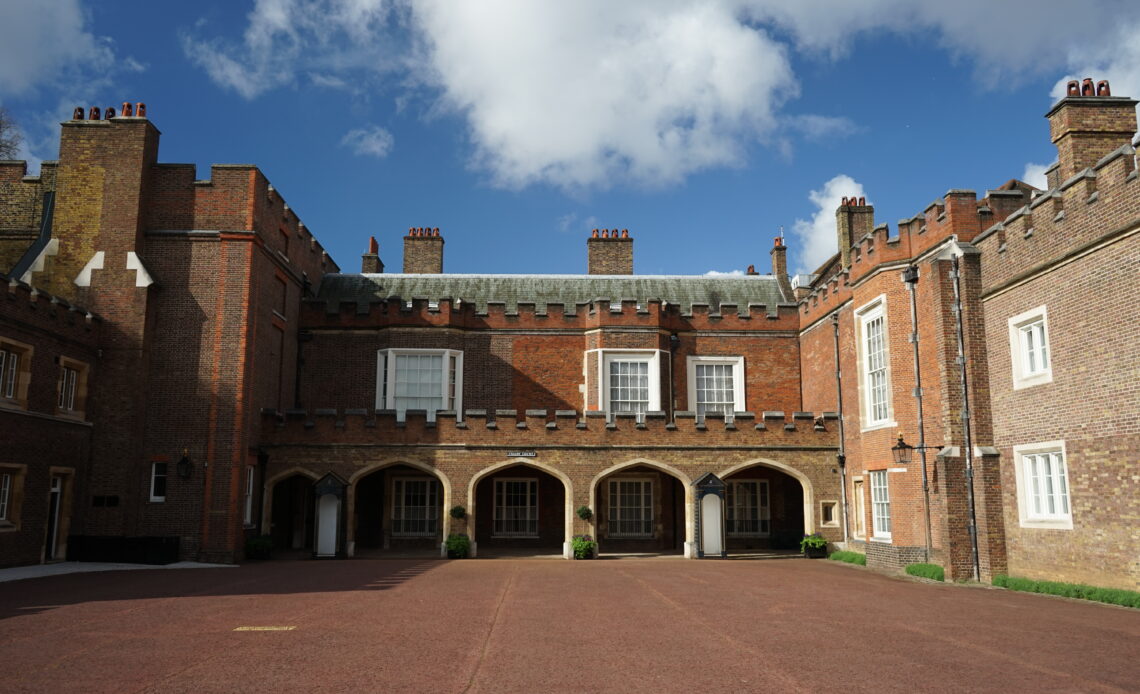
St James’s Palace is one of London’s most senior royal palaces, but it would never live to be the regular London home of the most senior royal, the monarch.
The palace was built by order of King Henry VIII in the 1530s on an isolated hospital dedicated to Saint James the Less, a figure of early Christianity. It would become second in importance to the Palace of Whitehall, the primary residence of English monarchs from 1530 until 1698, when most of it burned down during a fire.
Following the destruction of the Palace of Whitehall, St James’s took on administrative functions for the monarchy, and it increased in importance during the reigns of the Hanoverian monarchs (Kings George I, George II, William IV, and Queen Victoria, to name a few.) The palace would soon begin to be displaced by Buckingham Palace in the early 18th century.
While Queen Victoria was the last of the Hanoverian monarchs, she would become the first sovereign to reside at Buckingham Palace in July 1837. Following Her Majesty’s move to Buckingham Palace, St James’s was only used as a venue for courts, levées, and other ceremonies.
[getty src=”3306241″ width=”594″ height=”432″ tld=”com”]From 1912 to 1913, the palace was the venue for the international conference that arraigned the treaty between the Balkan states and Turkey following the Balkan Wars. The Second Round Table Conference regarding India’s independence would also be held here from September to December 1931. Ten years later, on 12 June 1941, representatives of the United Kingdom would join countries and exiled governments like Canada, Australia, Belgium, and Norway, as well as General Charles de Gaulle of France, to sign the Declaration of St James’s Palace. This would become one of the six treaties signed that established the United Nations and composed the Charter of the United Nations.
The Proclamation Gallery on palace grounds serves a significant role as it is used after the death of a reigning monarch. The Accession Council meets to declare the new monarch. Once that monarch makes a sacred oath to the council, the Garter King of Arms steps onto the Proclamation Gallery to properly proclaim the new monarch. This was done last on 10 September 2022 at the proclamation of King Charles III.
[getty src=”1243091748″ width=”594″ height=”396″ tld=”com”]The original palace looks much different from what a visitor might see today. It was surrounded by a deer park and gardens, and it was generally used as a hunting lodge and retreat from the formal court. It would also occasionally serve as a royal guest house. Today, while located near Buckingham Palace, it is in a more urban area as shops and restaurants have been built near it over the years.
[getty src=”185635964″ width=”594″ height=”416″ tld=”com”]The nearby Queen’s Chapel adjoins St James’s and is not the same as the Chapel Royal. The Queen’s Chapel is open to the public at select times, while the Chapel Royal is not accessible to the public. They both remain active places of worship. The Chapel Royal is where some members of the Royal Family have been christened, including Princes George and Louis of Wales.
St James’s remains a working palace and the base of the Royal Court. It is also used to host official receptions for visiting heads of state and charities of which members of the Royal Family are patron.
While His Majesty The King does not live here, other members of the Royal Family do, including The Princess Royal, Princess Beatrice, and Princess Alexandra. The palace is not open to the public.

